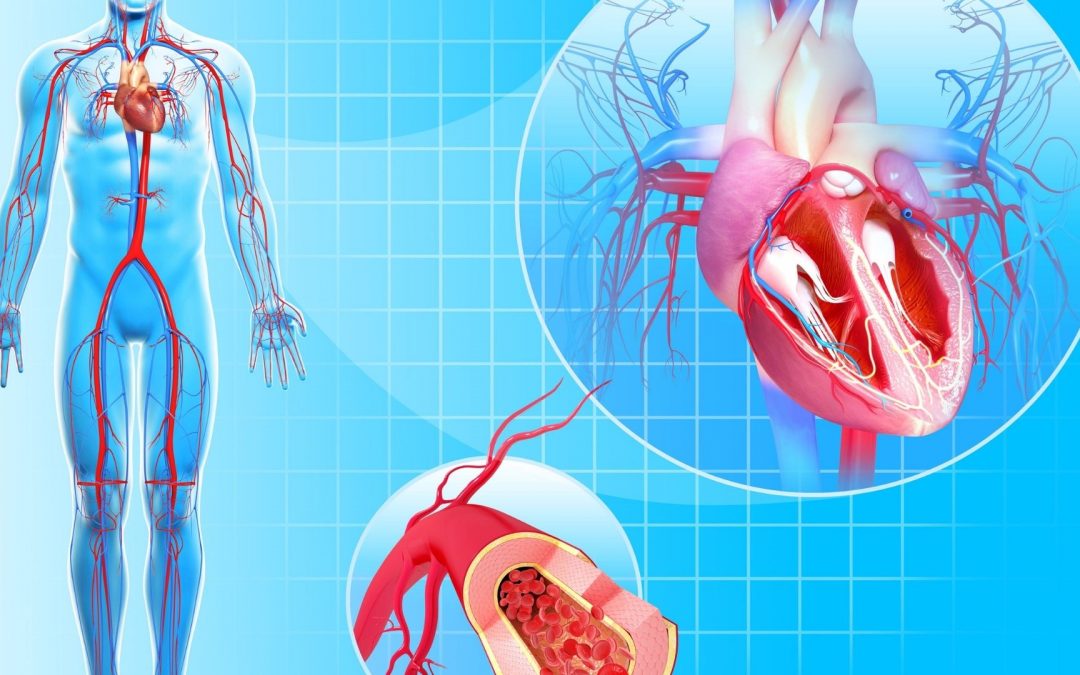It is well known that proper blood circulation in our body is essential to overall wellness and proper function of our body. When the blood flow in your blood vessels is somehow restricted, the blood does not reach all parts of the body as it should. Many symptoms of poor circulation occur in the extremities because they are farthest away from the heart that pumps the blood. Hypertension, stress, or illnesses can damage the nerves that are responsible for allowing blood flow. Blood is the only way that oxygen and nutrients reach every part of the body. If blood flow does not make it to all parts of the body, then parts will not receive the oxygen and nutrients they need, and those parts wont function properly.
Symptoms of Poor Blood Circulation
There are several symptoms that can indicate that the circulation of blood in your body is poor. Frequently, poor blood circulation can lead to numbness or a tingling sensation in your extremities (hands and feet or fingers and toes). Consequently, you may also experience striking pain in the extremities. Muscle cramps are another sign of poor circulation. Swelling in your feet can be an indication of poor circulation as well. If you have poor blood circulation, you may have trouble with your hands and feet being extremely cold. From time to time, you might feel overly exhausted and have trouble focusing. You may even have dizziness and nausea. At its extreme, poor blood circulation can lead to stroke or cardiac arrest.
Function
Veins and arteries are responsible for supplying blood throughout your body. These pathways for blood form a web all over the body with junctions that branch off. They consolidate more and more as they make their way closer to the heart. At the same time, the spine supports the circulatory system and provides a base for the circulatory system to branch out from. In other words, it affects blood circulation. When the heart is pumping blood normally, there may be restrictions along the way between the heart and your extremities. These restrictions can act as blockages that prevent healthy blood flow.
Diet
There are healthy foods that can make a difference in your blood flow. For instance, Omega-3s found in fish, seeds, and nuts help protect the lining of blood vessels and support circulation. In addition, leafy greens such as arugula, brussels sprouts, and broccoli are also good for the health of blood vessels. Surprisingly to some, beets have been shown to reduce blood pressure. Green tea is related to lower risk of coronary artery disease. Even dark chocolate contains polyphenols what help mobilize stem cells which may aid in circulation.
Spinal Manipulation and Blood Circulation
Chiropractic treatment is also considered to be one of the most effective and safe ways to provide treatment for poor circulation. Spinal Manipulation is the most effective chiropractic treatment to improve blood circulation. Manipulations have a direct impact on the central nervous system. Regular realignments help eliminate strain from nerves and allow the blood vessels to work properly.
The nervous system is one of the most important body systems because it controls and regulates all the other body systems (including the circulatory system!) Like arteries and veins that run all over the body like a web, nerves run throughout the body the same way. The spine is at the center of the central nervous system, and all nerves are controlled through it. All the nerves branch out from the spine. Spinal manipulation will enhance the functioning of all nerves.
By The Numbers
There is data that shows that chiropractic has been clinically proven to help improve blood flow. In a study from Journal of Manipulative and Physiological Therapeutics in 2015, 45 patients were assessed. Of the 45 participants, 16 people showed moderate spinal misalignment that resulted in 20-35% reduced blood flow to the brain. 15 participants showed sever subluxations with 30-45% reduced blood flow. The 14 people assessed to have good spine health showed no loss of blood flow at all. This study demonstrates the connection between spinal alignment and blood circulation.
Spinal Subluxations
Often, spinal subluxations are responsible for impeding circulatory system function. For example, blood supplies routed through the thoracic spine that are being pushed on by a bulging vertebral disc may see a 20% reduction in pressure due to the bottleneck. Consequently, 20% less circulatory force behind blood flow to extremities from that pathway. By the time blood reaches the extremities, it does so with very little behind it. In fact, the more the spine deviate from the norm, the more impediments hamper blood supplies. Moreover, couple this with nerve compression as well and the body begins to lack the circulatory power it needs to feed the hands, arms, feet, and legs.
Having your spine adjusted by a trained chiropractor is proven to have long-term benefits for increasing blood circulation and stabilizing blood pressure. In the event that you suffer from blood circulation challenges and want a natural, non-invasive solution, Spinal Logic can help. In the first place, Dr. Mike will take the time to assess every aspect of your lifestyle, medical history, and body to find a permanent solution to your challenges. Contact our team today at 317-745-5111 to schedule an appointment or learn more. We look forward to hearing from you.
Are you on Facebook? We are too. Let’s be friends!
Disclaimer: The information included in this article is for educational purposes only. It should not be used as a substitute for professional medical advice, diagnosis, or treatment.



